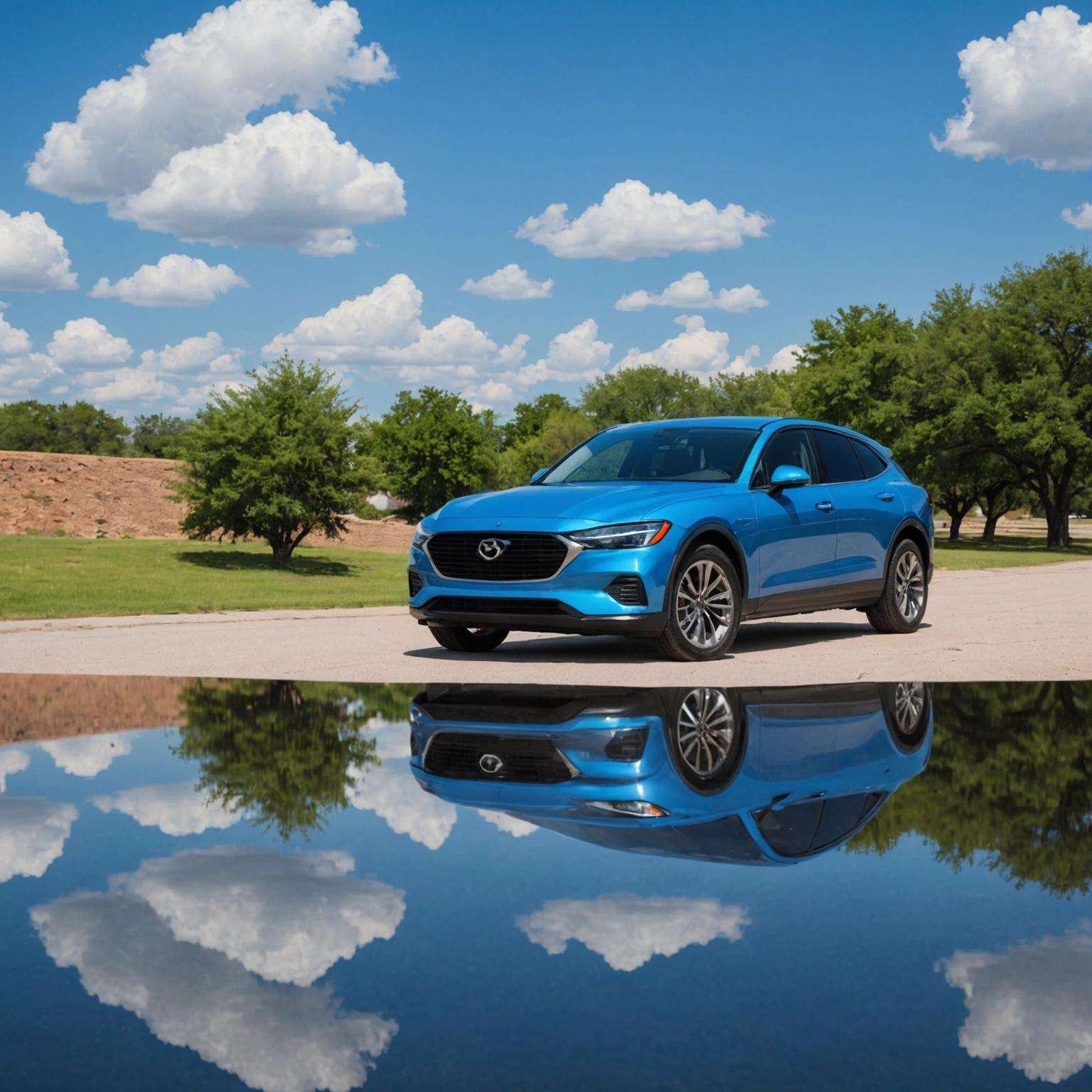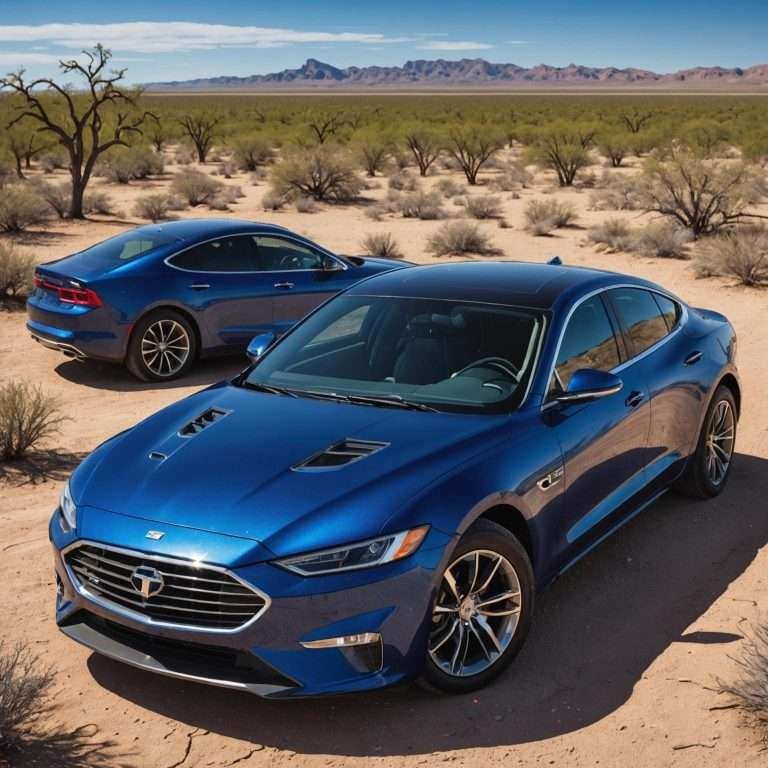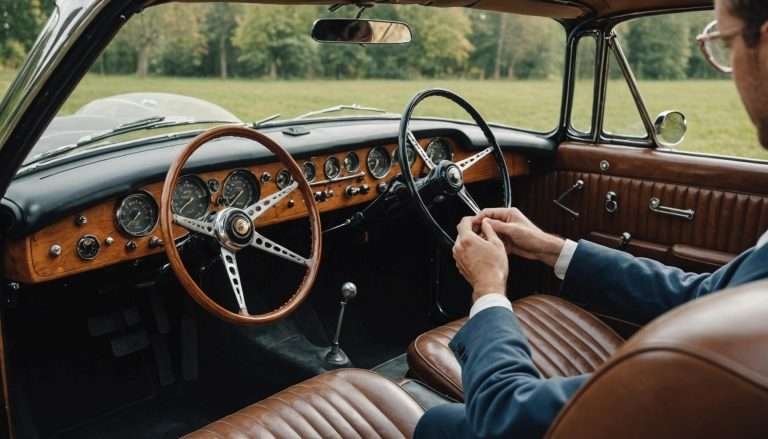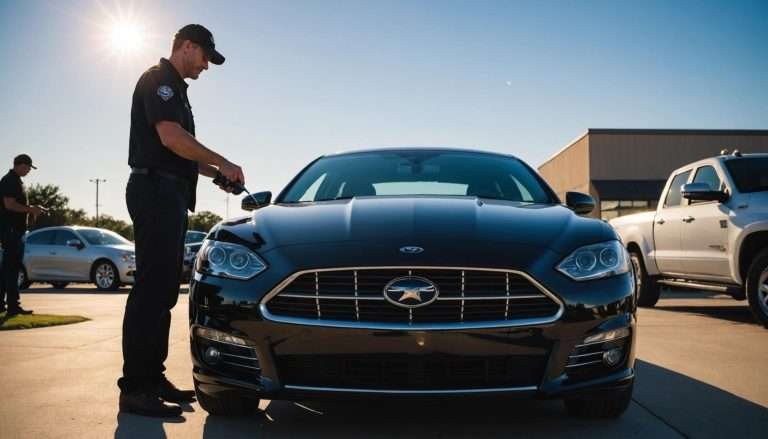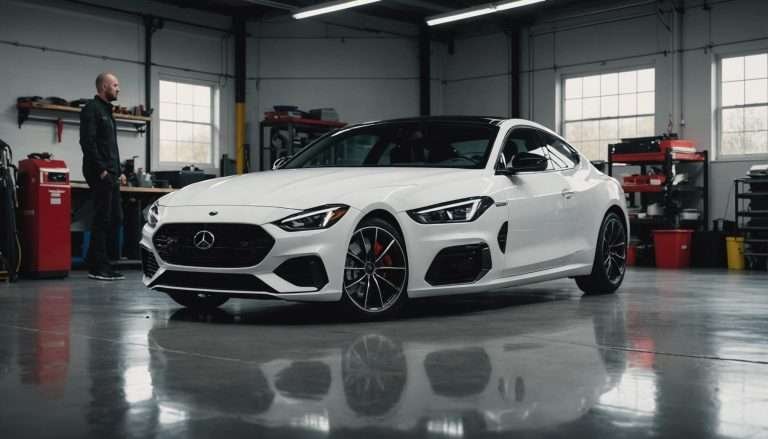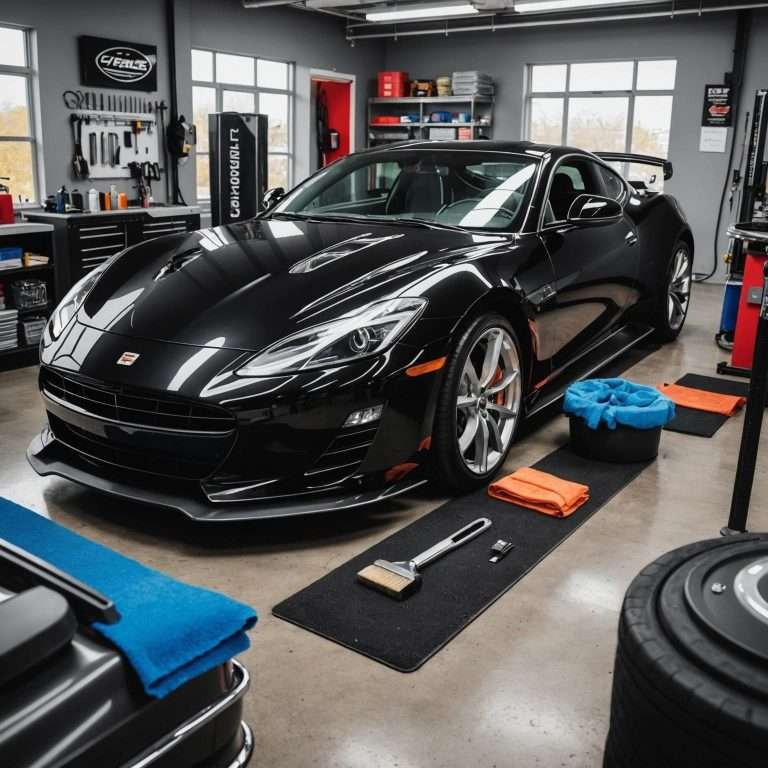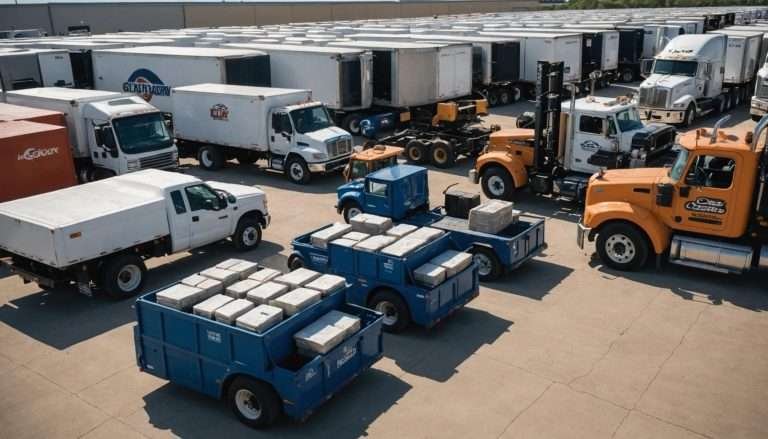Are you torn between choosing ceramic coating or wax for your vehicle here in Texas? At OCD Wash & Detail, we’re passionate about helping you make the right decision to keep your car looking pristine. As experts in car detailing, we understand the nuances of both options and are here to offer our insights.
This article will delve into the key differences between ceramic coating and wax, how each performs under the Texas sun, and guide you toward the best choice for your vehicle. So, let’s dive in and explore which protection method suits your needs in the vibrant climate of Texas!
What is the Difference Between Ceramic Coating and Wax?
When it comes to protecting your vehicle’s exterior, two popular options stand out: ceramic coating and wax. Both serve the purpose of maintaining your car’s shine and protecting its paint, but they do so in distinct ways.
Ceramic Coating: This is a liquid polymer applied to the exterior of a car. Once cured, it chemically bonds with the factory paint, offering enhanced protection. Unlike traditional wax, ceramic coatings provide a semi-permanent layer that can last for years and offer superior protection against environmental contaminants and UV rays. For those in Texas, ceramic coatings in Kennedale, TX are particularly beneficial due to the harsh sun and varying weather conditions.
Wax: On the flip side, wax is a natural or synthetic product that adds a protective layer on top of your car’s paint. It enhances gloss and shields the paint from minor scratches and elements, but its effects are temporary—usually lasting a few weeks to a few months depending on environmental conditions.
Here’s a quick breakdown of the key differences:
- Durability: Ceramic coatings are long-lasting, providing protection for several years; wax needs regular reapplication, typically every few months.
- Protection Level: Ceramic coatings offer robust protection against UV rays, bird droppings, and chemical contaminants; wax provides basic protection mainly against water and minor dirt.
- Gloss and Shine: Both enhance the car’s appearance, but ceramic coatings deliver a deeper, glossier finish.
- Application Process: Ceramic coatings require professional application for best results, while wax can be easily applied at home.
- Cost: Ceramic coatings are more costly upfront due to professional application; wax is budget-friendly in terms of product and application cost.
The choice between them depends on your needs, budget, and how much effort you’re willing to put into maintenance. Next, we’ll explore how the Texas climate impacts the performance of these car protection strategies.
How Does the Texas Climate Affect Ceramic Coating and Wax Performance?
The Texas climate—known for its intense heat, humidity, and occasional storms—can significantly impact the performance of both ceramic coatings and wax on vehicles. The environmental conditions here are TOUGH, challenging the resilience of protective finishes meant to keep your car looking pristine.
Impact of Heat and UV Rays
The long, hot summers in Texas mean your vehicle’s surface is regularly exposed to high temperatures and UV rays. These elements can cause traditional wax to melt or degrade quickly, reducing its protective qualities and lifespan. Ceramic coatings, on the other hand, offer superior heat resistance, helping to maintain a glossy, UV-protected finish for a longer duration.
Humidity and Rainfall Effects
With high humidity and frequent downpours in some parts of Texas, moisture can be a constant presence. This environment can lead to water spots and streaking, especially on wax-treated surfaces. Ceramic coatings provide a hydrophobic barrier that repels water, minimizing spotting and enhancing shine even after a rainstorm.
Dust and Debris Challenges
Dust storms and road debris are not uncommon in the Texas landscape. Dust can stick to wax-coated surfaces, making upkeep more demanding. Ceramic coatings form a harder, smoother surface, making it easier to clean off dust and debris, helping keep your vehicle looking fresh and clean.
In short, the Texas climate makes choosing the right protective finish for your vehicle essential. Up next, we’ll explore the specific benefits of using ceramic coating on your car in the Lone Star State.
What Are the Benefits of Using Ceramic Coating in Texas?
Texas weather can be TOUGH on vehicles—think blazing sun, torrential rain, and unpredictable hail. A ceramic coating offers a high-tech solution for shielding your car from these elements.
Superior UV Protection
With ceramic coating, UV protection is a top priority. The Texas sun is notorious for fading and dulling paint. Ceramic coatings act like SUNBLOCK for your car, preventing oxidative damage and paint discoloration.
Durability Against the Elements
Ceramic coatings create a glass-like shield on your vehicle’s surface. This makes it more resistant to rain, dirt, and fallout from frequent storms. In Texas’s variable weather, maintaining a pristine finish just got easier. For those in the area, consider exploring ceramic coatings in Fort Worth, TX to protect your vehicle.
Low Maintenance Clean-Up
Ceramic coatings offer a slick and hydrophobic surface—meaning water and grime slide right off. Cleaning your car takes less time and effort, which is especially appealing after a dusty Texas drive.
Preserving Aesthetic Appeal
The deep, glossy finish provided by ceramic coatings enhances your car’s appearance. Even after years under the Texan sky, it retains that showroom SHINE, boosting your vehicle’s visual appeal and resale value.
Next, we’ll look at the unique benefits of using wax in the Texas climate and how it compares to ceramic coating.
What Are the Benefits of Using Wax in Texas?
In Texas, where the sun beats down with intensity, car owners seek ways to protect their vehicles. Wax is a classic choice—and for good reason! It offers a range of benefits tailored to Texas’s unique climate conditions.
Protects Against UV Damage
The relentless Texas sun is no joke! Wax adds a protective layer to your car’s paint, helping to shield it from harmful UV rays. This prevents fading and oxidation, keeping your vehicle’s finish vibrant.
Repels Water and Dirt
With Texas’s unpredictable rain and dust, a good wax job creates a hydrophobic surface. Water beads up and rolls off easily, carrying dirt away with it.
Enhances Shine and Aesthetics
Want your car to turn heads? Wax brings out the shine in your vehicle’s paint, making it look polished and well-maintained. It fills in minor scratches, giving the appearance of a smoother surface.
Easy Application and Maintenance
Waxing your vehicle is a relatively simple process (quick and cost-effective!). With the right wax, you can achieve great results at home, preserving your vehicle’s look between professional details.
Cost-Effective Protection
Compared to other protective solutions, wax is a budget-friendly option. While it may require more frequent application than ceramic coatings, it provides substantial benefits without breaking the bank.
In the next section, we’ll explore how long these benefits last and compare the durability of wax to other options in Texas’s harsh conditions.
Which Lasts Longer: Ceramic Coating or Wax in Texas Conditions?
When it comes to the longevity of car protection in Texas, ceramic coating generally outlasts wax. Texas weather is known for its intense sun and temperature extremes, which can affect how long your vehicle’s protection holds up.
Ceramic coatings provide a durable, long-lasting shield, standing strong against heat, UV rays, and other environmental factors prevalent in Texas. In contrast, wax tends to break down more quickly under the same conditions, requiring more frequent reapplication. For more insights on how ceramic coatings protect against Texas sun damage, check out this detailed guide on ceramic coatings and sun damage.
Here’s a quick comparison on longevity:
- Ceramic Coating: Can last 2-5 years depending on the product quality and application process, offering a semi-permanent layer of protection.
- Wax: Typically lasts about 1-3 months, requiring periodic reapplications to maintain its effectiveness and shine.
If you’re looking for a long-term solution that can withstand the challenging Texas climate, ceramic coating is a more effective choice. However, if you prefer an easier and more affordable option with a high gloss finish, wax might be suitable—just be prepared for more frequent touch-ups.
How to Choose Between Ceramic Coating and Wax for Your Vehicle in Texas
Deciding between ceramic coating and wax for your vehicle in Texas involves several factors. Both options offer distinct advantages based on your needs—durability, shine, protection, and cost.
Texas weather throws a mix of challenges at your car: intense heat, UV rays, and the occasional storm. These factors play a big role in your decision. Here’s a step-by-step guide to help you choose:
- Assess Your Budget: First, determine how much you’re willing to spend. Ceramic coating is more expensive upfront but lasts longer, while wax is cheaper but requires more frequent applications.
- Consider Your Vehicle’s Exposure: If your car spends a lot of time outdoors, ceramic coating offers superior protection against UV damage and oxidation.
- Evaluate Maintenance Preference: Ceramic coating requires less frequent upkeep than wax, making it ideal if you prefer a low-maintenance option.
- Shine and Finish Desired: Both options provide a glossy finish, but wax can offer a slightly warmer glow, which some car enthusiasts prefer.
- Time Investment: Waxing your car can be a DIY job done over a weekend, whereas ceramic coating might require professional application, which can take several hours or even days. Consider opting for a full professional car detailing package in Texas to ensure the best results.
- Long-Term Protection Needs: If you want longer-lasting protection from potential contaminants like road grime, bird droppings, and tree sap, ceramic coating is usually more effective.
By considering these factors, you can make an informed decision that suits your lifestyle and vehicle’s needs in the Texas climate. This choice should balance protection, aesthetics, and cost-efficiency to keep your car looking its best.
Conclusion
When deciding between ceramic coating and wax for your vehicle in Texas, it’s crucial to consider factors like long-term protection, cost, and maintenance. Ceramic coatings offer superior durability and protection against environmental elements, making them an excellent investment for those looking to preserve their car’s appearance over time. On the other hand, wax might be more suitable for those seeking a short-term shine and lower upfront costs.
At OCD Wash & Detail, we understand the unique needs of your vehicle and offer comprehensive detailing services to keep it looking its best. Whether you’re based in Kennedale, Arlington, Mansfield, or Fort Worth, our expert team is ready to assist you with top-notch ceramic coatings and detailing services. For personalized advice and high-quality service tailored to your vehicle’s needs, reach out to Nicholas Pugliese at 817-818-0959 or email us at njpsaleen@gmail.com. Let us help you make the best choice for your vehicle’s care and maintenance.

